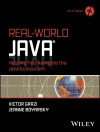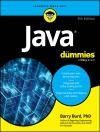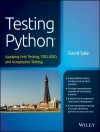As one of the most popular programming languages in the world, Visual Basic continues to expand on the functionality andflexibility of its framework. This book explains how to use Visual Basic 2005 to write efficient database applications that can beused throughout an enterprise.With this teaching tool, you’ll learn how to use queries, views, and stored procedures to efficiently access and manipulate datafrom your applications. You’ll get a firm grasp on using ADO.NET aswell as Ole Db, SQL, and Oracle to access specific databases. Plus, hands-on examples and try-it-out exercises help you put yourreading into practice so that with each chapter, you’ll graduallybuild the pieces of a single application.What you will learn from this book* How ADO.NET continues to evolve as a building block foraccessing and manipulating data in relational databases* Ways to encrypt and decrypt data, hash passwords, and furthersecure access to your data* Techniques for accessing your Web Service from both Windows(r)and Web applications* Best practices for using business logic and data accesscomponents to produce report data or update data in your back-enddatabases Who this book is for This book is for developers who want to learn to write databaseapplications and back-end databases, such as Microsoft(r) Access, Microsoft(r) SQL Server, and Oracle(r). Some experience with Visual Basic 2005 is helpful but not required.Wrox Beginning guides are crafted to make learning programminglanguages and technologies easier than you think, providing astructured, tutorial format that will guide you through all thetechniques involved.
Mục lục
Acknowledgments.Introduction.Chapter 1: Databases.Chapter 2: An Introduction to ADO.NET.Chapter 3: Visual Studio 2005 Data Wizards.Chapter 4: Basic SQL.Chapter 5: SQL and Queries for Access.Chapter 6: Selecting Data in Access.Chapter 7: Inserting, Updating, and Deleting Data in Access.Chapter 8: Migrating Data from Access.Chapter 9: Stored Procedures and Views for SQL Server and Oracle.Chapter 10: Building Business Logic and Data Access Components.Chapter 11: Inserting Data.Chapter 12: Selecting Data.Chapter 13: Updating Data.Chapter 14: Accessing Data in ASP.NET.Chapter 15: Creating a Web Service.Chapter 16: Accessing a Web Service.Appendix A: Data Type Cross-Reference.Appendix B: Time Tracker Project UI.Appendix C: Exercise Solutions.Index.
Giới thiệu về tác giả
Thearon Willis is a senior consultant with over 20 years of programming experience. He started writing applications using the Basic language in 1980 and later moved on to Visual Basic and finally to Visual Basic.Net. He began working with databases in 1987 and has been hooked on writing database applications ever since. He has experience with SQL Server, Oracle, and DB2 but works with SQL Server on a daily basis. Thearon has programmed in several other languages, some of which include C++, Assembler, Pascal, and COBOL. However, he enjoys Visual Basic.Net the best as it provides the features needed to quickly build Windows and Web applications as well as components and Web Services. He currently develops intranet applications, Web Services, and server-side and client-side utilities using Visual Basic.Net. Most of these applications and utilities are database-driven and make use of XML and XSL.












